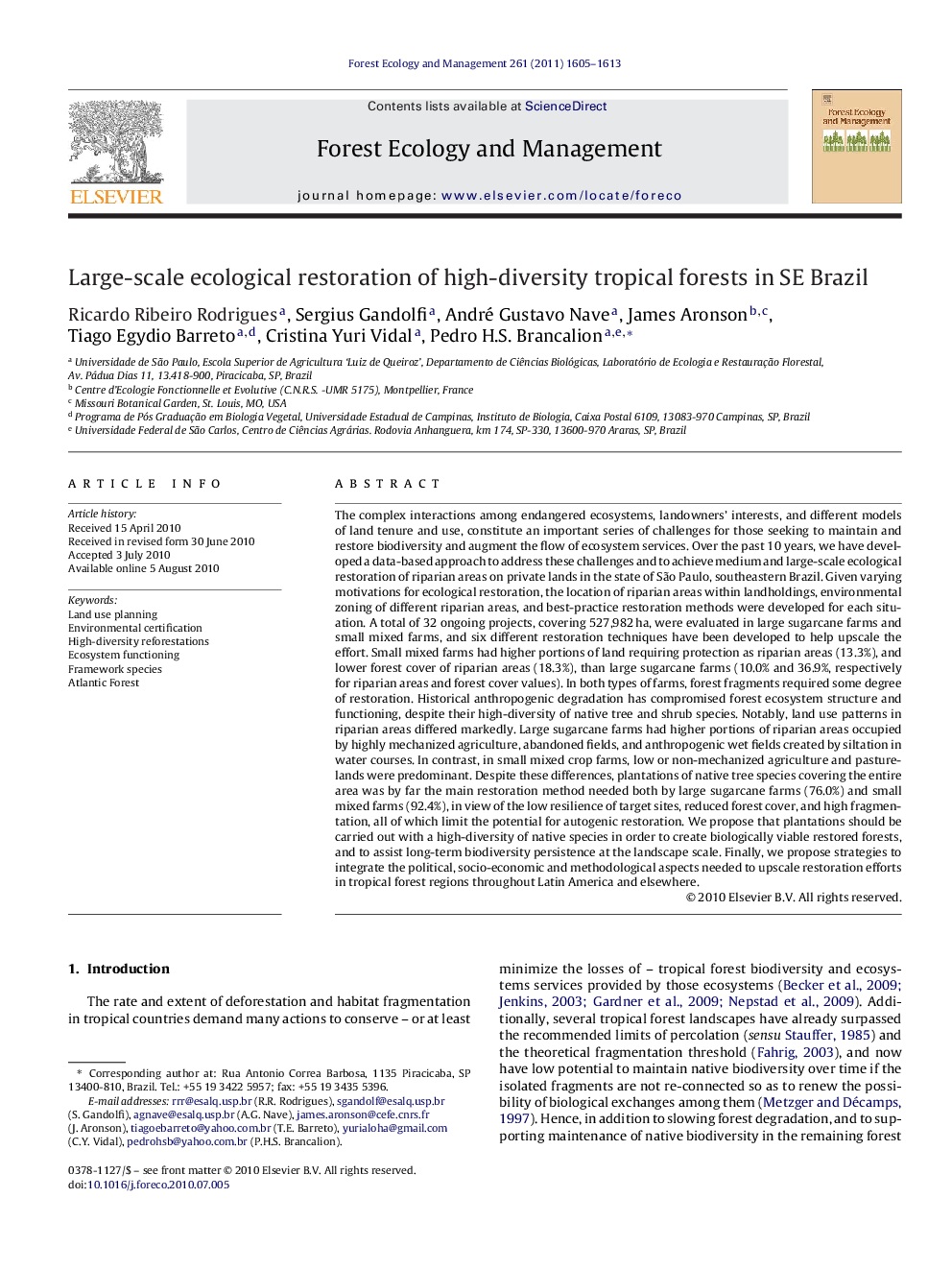| کد مقاله | کد نشریه | سال انتشار | مقاله انگلیسی | نسخه تمام متن |
|---|---|---|---|---|
| 88045 | 159279 | 2011 | 9 صفحه PDF | دانلود رایگان |

The complex interactions among endangered ecosystems, landowners’ interests, and different models of land tenure and use, constitute an important series of challenges for those seeking to maintain and restore biodiversity and augment the flow of ecosystem services. Over the past 10 years, we have developed a data-based approach to address these challenges and to achieve medium and large-scale ecological restoration of riparian areas on private lands in the state of São Paulo, southeastern Brazil. Given varying motivations for ecological restoration, the location of riparian areas within landholdings, environmental zoning of different riparian areas, and best-practice restoration methods were developed for each situation. A total of 32 ongoing projects, covering 527,982 ha, were evaluated in large sugarcane farms and small mixed farms, and six different restoration techniques have been developed to help upscale the effort. Small mixed farms had higher portions of land requiring protection as riparian areas (13.3%), and lower forest cover of riparian areas (18.3%), than large sugarcane farms (10.0% and 36.9%, respectively for riparian areas and forest cover values). In both types of farms, forest fragments required some degree of restoration. Historical anthropogenic degradation has compromised forest ecosystem structure and functioning, despite their high-diversity of native tree and shrub species. Notably, land use patterns in riparian areas differed markedly. Large sugarcane farms had higher portions of riparian areas occupied by highly mechanized agriculture, abandoned fields, and anthropogenic wet fields created by siltation in water courses. In contrast, in small mixed crop farms, low or non-mechanized agriculture and pasturelands were predominant. Despite these differences, plantations of native tree species covering the entire area was by far the main restoration method needed both by large sugarcane farms (76.0%) and small mixed farms (92.4%), in view of the low resilience of target sites, reduced forest cover, and high fragmentation, all of which limit the potential for autogenic restoration. We propose that plantations should be carried out with a high-diversity of native species in order to create biologically viable restored forests, and to assist long-term biodiversity persistence at the landscape scale. Finally, we propose strategies to integrate the political, socio-economic and methodological aspects needed to upscale restoration efforts in tropical forest regions throughout Latin America and elsewhere.
Research highlights▶ Large-scale restoration requires a well-defined plan of action to be well succeeded. ▶ Different restoration strategies are needed in small and large farms. ▶ Socio-economic aspects of land use and tenure have to be considered by restoration. ▶ Active restoration is predominantly needed in human-modified tropical landscapes. ▶ High-diversity reforestations improve ecosystem services and biodiversity conservation.
Journal: Forest Ecology and Management - Volume 261, Issue 10, 15 May 2011, Pages 1605–1613